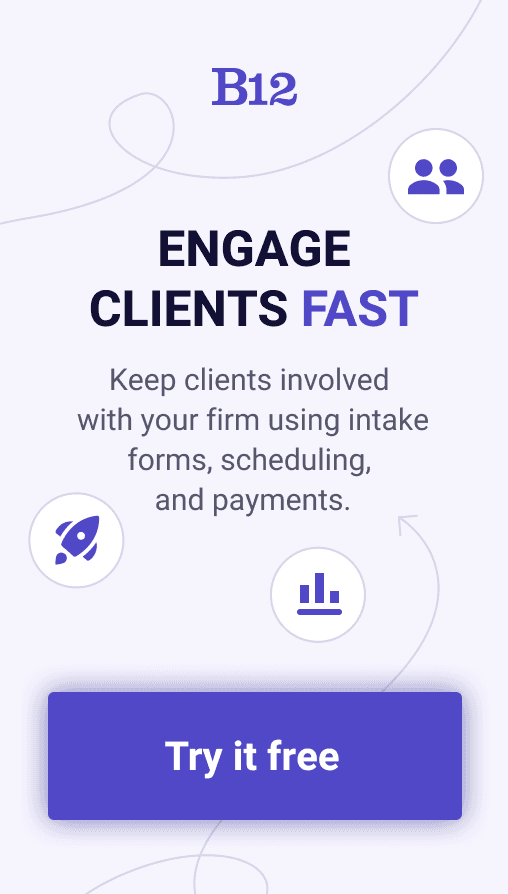Build an AI website in 60 seconds
AI generates your personalized website instantly with built-in scheduling, payments, email marketing, and more.
Start for free
What is a lead source? Types and best practices

Lead generation is a crucial element of any business's growth strategy. But it's not just about collecting contact details. It's about understanding where your potential customers come from - their lead source.
A lead source is simply the channel or method through which a lead finds your business. For B2C companies, the top lead source is SEO (14%). This is followed by email marketing (13%) and social media (12%).
Choosing the most valuable lead source can be the difference between skyrocketing sales or struggling to fill your pipeline.
In this blog post, we'll dive deeper into what a lead source is, explore its main types, and provide you with tips and tricks. We'll also discuss best practices for tracking lead sources and managing multiple lead sources, so you're not missing any potential hot leads. Let's get started!
Understanding the basics of lead source
The success of any business depends significantly on its ability to generate and convert leads. Lead source, in particular, plays a crucial role in ensuring that a steady stream of prospective customers is flowing to the business.
A lead source refers to the marketing channels or methods businesses use to attract potential customers. Understanding this concept is critical to building a solid marketing strategy. It allows companies to focus their energy and resources on the most effective marketing channels. By identifying the lead sources generating the most qualified leads, a business can tailor their marketing efforts to target that specific audience.
As businesses grow, different lead sources become available, each with its own advantages and disadvantages. A business must understand the different lead sources available to them, and their potential impact, to select the most suitable options to grow their customer base.
Types of lead sources: inbound vs. outbound
Generally, there are two types of lead sources: inbound and outbound. Inbound lead sources come to you naturally, without any direct effort on your sales team or marketing team's part. Outbound lead sources require a more active approach from you or your sales rep, where you are proactively seeking out potential customers.
Inbound
Inbound lead sources can be incredibly powerful, driven by the potential customer's interest and intent. Inbound lead source examples include search engine optimization (SEO), content marketing, and word-of-mouth referrals. These types of lead sources can be highly effective because they are based on the potential customer's natural interest and need for your products or services.
Outbound
On the other hand, outbound lead sources are more proactive and require a direct effort on your sales and marketing team's part to reach potential customers. Outbound lead sources can be effective in targeting specific audiences, but they also require more resources and can be more expensive. Examples of outbound lead sources include paid ads, cold calling, and direct mail campaigns.
Combining inbound and outbound
Ultimately, the best lead source for your business will depend on your specific digital marketing goals and budget. Most businesses will benefit from a combination of inbound and outbound lead sources. But the key is understanding which tactics are most effective for reaching your target audience and generating more qualified leads. By strategically leveraging different channels and lead sources, you can get more qualified leads, maximize your marketing ROI, and grow your business over time.
Uncovering the best lead sources for your business
As a business owner, lead generation and lead management can be overwhelming, and it's essential to determine which lead sources work best for your business. Lead sources come in different types and can vary for industries, products, and services. Therefore, understanding the nature and efficacy of different lead sources is crucial for unlocking optimal growth potential.
To uncover the best lead sources for your business, you must analyze your target market, industry trends, and competitors. Understand your customers' needs, preferences, and purchasing habits. This can help you identify which lead methods and sources are likely to yield better results. Analyzing industry data and market trends can provide insights into what methods work best in your industry, while studying your competitors can help you learn which channels they use to attract customers.
Once you have narrowed down the potential sources of organic leads, test and measure each one to determine its effectiveness. This process entails tracking key performance indicators (KPIs), such as organic traffic, conversion rates, and customer engagement, to gauge the success of each lead source. Based on your KPI metrics analysis, you can then optimize your lead generation strategy for maximum lead generation and high ROI from the best lead sources.
Leveraging social media channels as a lead source: tips and tricks
Social media has become an essential part of our daily lives. And it's no surprise that it has vast potential when it comes to lead sourcing.
Identify and engage target audiences
To leverage social media as a qualified lead source, strategic planning is required. First, you must identify your target audience, create appealing social media profiles, and regularly post quality content across different channels. Secondly, it is crucial to interact with your followers across your social media channels. Engage them through comments, shares, and direct messages.
Use relevant hashtags
An important aspect of social media lead generation is the effective use of hashtags. You must use appropriate hashtags in our posts on Twitter, Instagram, and LinkedIn. Through relevant hashtags, you can gain visibility and increase your chances of attracting relevant audiences.
Monitor competitors
It is vital to keep track of what your competitors are doing and learn from their strategies. For instance, are they running any social media ads? By monitoring their social media activity, you can create relevant content and lead generation campaigns that appeal to your target audience.
Create a strategy that reflects brand values
Social media isn’t just about generating leads but also about building brand awareness and a strong online presence. Therefore, you must focus on creating a social media strategy that reflects your brand values and goals. Your strategy should align with your overall marketing plan. Engaging with influencers with the same values and partnering with them on campaigns is another effective way to increase reach and improve engagement rates.
Best practices for managing lead sources and generating leads
Managing lead sources and generating quality leads is a continuous process that requires careful monitoring and analysis of lead opportunities. Here are some best practices for managing lead sources.
Track lead sources' performance
Lead source tracking will help you identify the most effective sources and tweak your strategies for those that are underperforming. As such, it is crucial to track leads, establish definitions and goals, measure the sources' conversion rates, and adjust your strategies and tactics accordingly.
Qualify leads
Qualification involves assessing the prospect's level of interest and their fit with your product or service. It’s essential to identify and prioritize the most qualified leads that are more likely to convert. But it's also important to avoid wasting time and resources on leads that are unlikely to convert. Qualifying leads should be one of your essential priorities in your lead generation and sourcing plans.
Engage and nurture leads
Engaging leads and building relationships with them often involves a bit of patience and consistency. But this can boost their trust in your brand and increase the probability of conversion. Automated emails that offer valuable information, personalized follow-ups, and content marketing can all help engage leads and build rapport.
Organize leads
Keeping your sales leads organized means utilizing CRM software or other tools to keep track of each lead's details and where they are in the sales cycle or funnel. The more organized your system, the less likely you'll be to lose track of an important sales lead. As a result, you’ll become more efficient.
Navigating the world of lead sources for optimal growth
Navigating the world of lead sources can be a daunting task for any business owner or marketer. There are numerous channels available to generate leads. And it can be challenging to know which one to focus on. However, it's vital to understand that not all lead sources are the same. A strategy that works for one company may not work for another.
Continuous monitoring
When selecting your lead sources, it’s crucial to continually measure and adjust. For example, you may think a certain social media platform seems like the best lead source for your business. But what if you do not see significant engagement or conversions? Then it may be time to rethink your strategy. It's essential to have the flexibility to adapt your plans based on your metrics and customer feedback.
Automation
Another critical aspect of managing lead sources is automation. With the right tools, you can automate many of the mundane tasks that come with generating and managing leads. These include email outreach, lead scoring, and sales follow-ups. So why automate these processes? Through automation, you free up time and resources. This allows you to focus on high-value activities such as developing new, multiple lead generation campaigns and improving customer engagement.
Latest trends
Finally, remember that the world of lead sources is constantly evolving. That’s why staying up to date with the latest trends and developments is critical. Joining industry forums, attending conferences, and keeping an eye on industry publications can provide valuable insights into what's working and what's not. By continually learning and adapting your strategies accordingly, you can ensure your business grows and thrives in today's competitive marketplace.
Boost your lead generation efforts with B12
B12 is the all-in-one platform that helps professional service small businesses launch an online presence. B12 combines powerful client engagement tools so you can reach your target audience and nurture your relationships with them.
Save time by reducing unnecessary manual tasks with email automation, and make online scheduling a breeze.
Get started for free.
Attract, win, and serve more clients
Receive helpful resources directly to your inbox to help you succeed online.
Draft your site in 60 seconds
Get an AI website made specifically for you that's free to launch.
Start for free ✨No credit card required
Spend less time on your website and more time growing your business
Let B12 set up your professional online presence with everything you need to attract, win, and serve clients.





